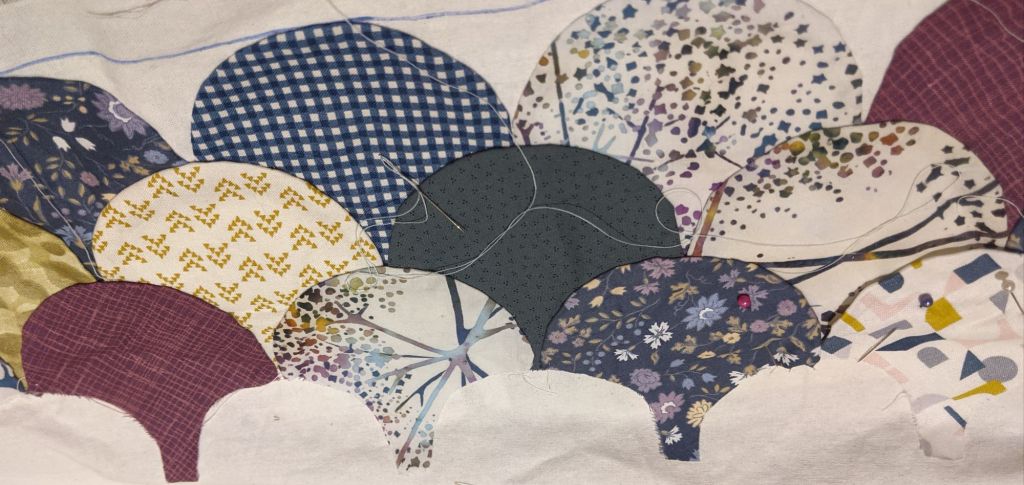Very occasionally I buy quilting magazines, and one came with clamshell paper templates.
Just after I finished handpiecing my snowdrop quilt, I was looking for other handsewing projects. I have loved clamshell quilts and sewing projects since forever and it seemed like a good way to go.
I’d also just moved house into a drafty Victorian terrace and needed a draft excluder. I thought it was going to be a fun quick project.
I picked my fabrics by starting with the remnants of the batik fabric that backs the snowdrop quilt. I then shopped my stash and then the fabric shop in town. I bought the fabrics at the same time as I was shopping for my rosemallow quilt that went to my guide son, and there is some crossover between the two. This is one of the things I love about making things, the bleed over fabrics and the stories they tell. There is a blue floral fabric in this piece, that I took from my mother and back in my teen years, began a dress. I still have the half made dress in my stash – now the wrong size but I can’t quite bring myself to take it apart.

The clamshells are handbasted, ironed and then appliqued to each other and the base fabric. It’s slow and unlike English paper piecing, I found the process much less meditative. So this was a slow process – I don’t believe I picked it up at all in 2023.
As part of my push to finishing things this year, I took this along to my sewing group as a way to make myself get over the activation barrier of starting a project. When I packed up the project, I had planned to add three more rows, which would have required cutting and blasting more clamshells. However once I had added one more row, I realised that I could actually join the piece as it was and it would be plenty big enough. That felt far more achievable.
In an ideal world, I would have pinned or basted the first row down and then appliqued the second row down. That would have let me tuck the final row in under the first to make a tube. However as I appliqued the first row down, I cut round the shapes, tucked the base fabric behind and appliqued it to the final row. It’s a little messy and occasionally the base fabric is visible but it’s secure. And I don’t know many people who would be inspecting my draft excluder in that way.
I then added a slightly puffed circle at each end. For stuffing, I cut up all the scraps of wadding that I’d cut off quilts before binding, and used those plus some toy stuffing. I’m trying to think about sewing scraps and when I keep them and use them and when I don’t. This seemed like an ideal way to use a thing I’d been keeping and it worked great – I’ll do it again.

I have moved house since starting this project, so the draft excluder is longer than a standard door. So I stuffed it gently so it can squish it to the door frame. This house also has drafts so it’s been put to good use already.

One thought on “Clamshells and executing your grand ideas”